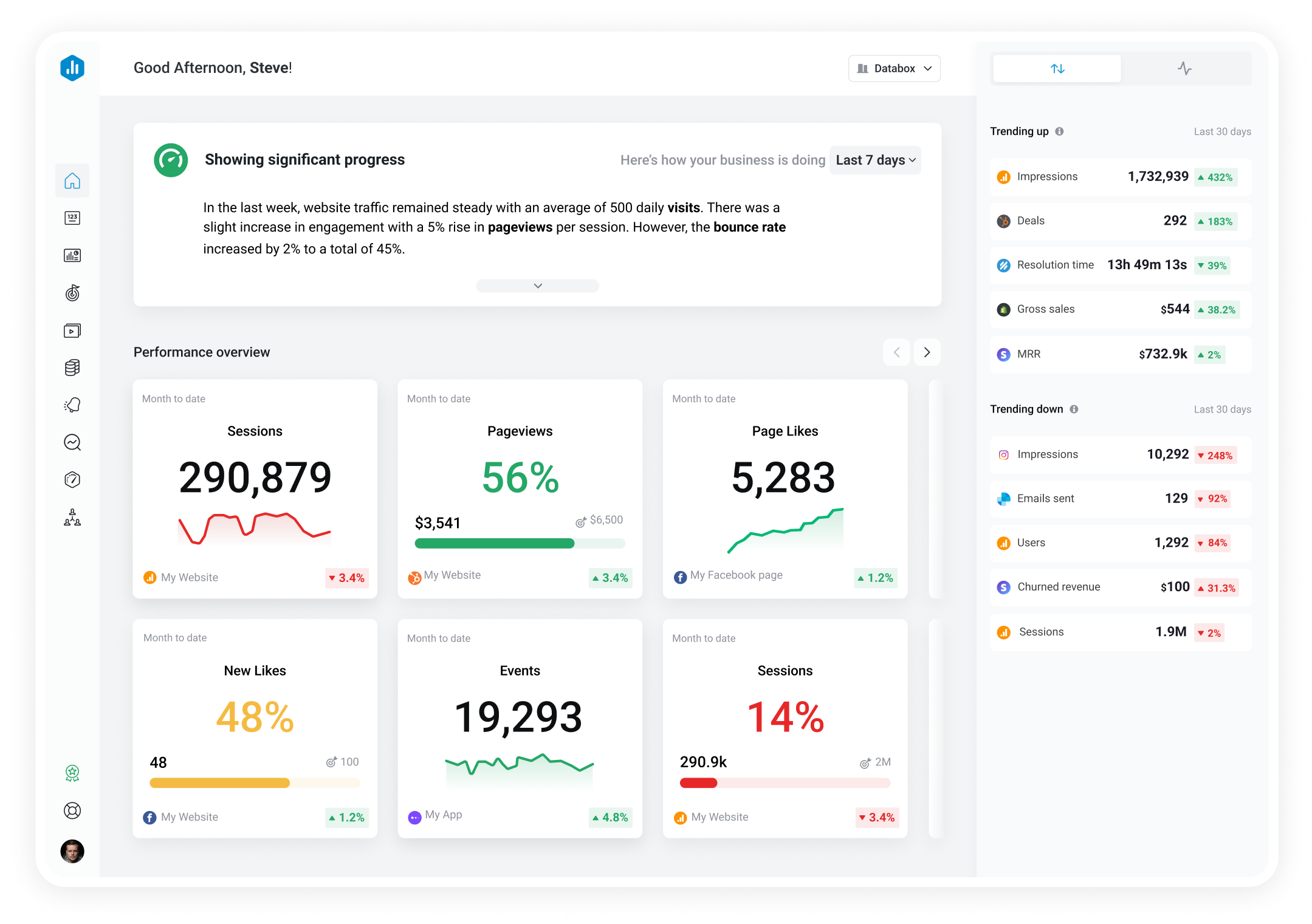Track all of your key business metrics from one screen
GET STARTED
 QuickBooks
Cost of Goods Sold (Cash)
QuickBooks
Cost of Goods Sold (Cash) Cost of Goods Sold (Cash) is a financial metric that calculates the direct costs incurred in producing goods or services sold during a specific period, reflecting the cash outflows related to inventory, manufacturing, and raw materials.
With Databox you can track all your metrics from various data sources in one place.
Cost of goods sold is a fundamental financial metric that represents the direct costs a business incurs when producing or acquiring the goods or services it sells.
The metric encompasses all the expenses directly associated with the production, such as raw materials, direct labor costs, and manufacturing overhead.
Cost of goods sold is a critical metric for all businesses, but especially those involved in manufacturing, retail, or any industry that involves the sale of physical products.
To calculate the cost of goods sold, you first need to determine the following:
Once you have these things, you can follow this formula:
COGS = Opening Inventory + Purchases or Manufacturing Costs – Closing Inventory
Suppose a company has an opening inventory worth $50,000 at the beginning of the year.
During the year, it purchases additional inventory worth $100,000 and incurs manufacturing costs of $30,000. At the end of the year, the value of the closing inventory is $40,000.
COGS = $50,000 (Opening Inventory) + $100,000 (Purchases or Manufacturing Costs) – $40,000 (Closing Inventory)
Once we apply the formula, we find that the cost of goods sold amounts to $110,000.
Remember that the calculation may vary depending on the specific accounting methods used, such as the first-in, first-out (FIFO), or the last-in, first-out (LIFO) method.
Additionally, you may need to factor in specific adjustments like work-in-progress inventory or freight costs.
When assessing whether your cost of goods sold is objectively good, the best thing you can do is compare your numbers with industry peers, historical data, and consider the overall profitability and efficiency of your operations.
But in case you’re struggling to find some more granular data on those, here are some general industry benchmarks that might be useful:
And if you’re curious about more concrete numbers, here’s one interesting benchmark we pulled out from our product.
A good cost of goods sold in QuickBooks is from $15,000 to $30,000, according to QuickBooks Benchmarks for All Companies.
Remember that these benchmarks should be used as general references and that it’s much more important to consider industry-specific factors, company size, growth stage, and other relevant metrics when evaluating your cost of goods sold.
If you want to stay on top of future trends and be able to instantly compare your performance to companies just like yours (in any given industry), you can join our Benchmark Groups – it’s free for everyone!
Reducing the cost of goods sold leads to increased profitability, competitive advantage in the industry, more pricing flexibility, and overall better financial performance.
But finding the right ways to do it isn’t easy.
That’s why we prepared a few tips based on our interviews with hundreds of industry experts:
More resources to help you reduce the cost of goods sold:

Used to show a simple Metric or to draw attention to one key number.

Used to illustrate numerical proportions through the size of the slices.

Used to show comparisons between values.
Databox is a business analytics software that allows you to track and visualize your most important metrics from any data source in one centralized platform.
To track Cost of Goods Sold (Cash) using Databox, follow these steps:
 Goals
Goals Scorecards
Scorecards Metric Digest
Metric Digest Metric Builder
Metric Builder Data Calculations
Data Calculations Performance Screen
Performance ScreenOptimize e-commerce with our WooCommerce + QuickBooks dasboad. Monitor Sales Funnel, Performance, Profit & Loss, Revenue, Expenses and Cash Flow metrics for actionable insights


This report gives a snapshot of financial results using QuickBooks data on income, expenses, cash flow, balance sheet, and overall financials, supporting informed financial decisions.

No, the cost of goods sold includes the direct costs associated with producing or acquiring goods or services sold, while production costs typically refer to the expenses incurred solely in the manufacturing or production process.
To analyze the cost of goods sold, you can review it in relation to revenue over time to determine trends and assess profitability.
Additionally, comparing it to industry benchmarks and competitors can provide some useful insights into cost efficiency.
Cost of goods sold and cost of sales are essentially the same and represent the direct costs incurred in producing or acquiring the goods or services sold by a company. The terms are used interchangeably.
